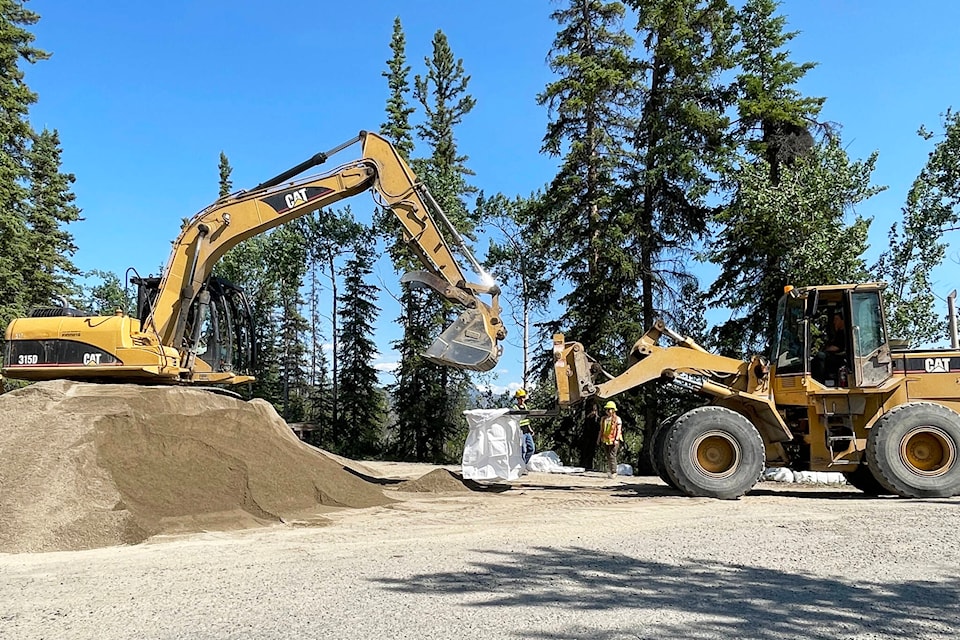The Yukon has yet to recoup some of the $8.4 million spent on 2021 floods in the territory, but the government says it has hired a dedicated finance person to work with the federal government to help make it happen.
“That person will be in charge of making sure that we have the finances in the correct format, so that we can go and claim that money back from the federal government,” says Damien Burns, assistant deputy minister of Protective Services in the department of Community Affairs.
The Yukon is working to tap into a Disaster Financial Assistance Arrangement, which is a large-scale natural disaster fund provided by the federal government. According to Burns, the money must be accessed by the territorial power, versus municipalities or First Nations.
“Then we pass that back on to communities that have spent that money,” Burns said.
Online program information for the disaster fund says that it is “to help provinces and territories with the costs of response and of returning infrastructure and personal property to pre-disaster condition.” The territory has up to five years to apply to recoup eligible expenses under a cost-sharing formula that is based upon and rates determined by the Government of Canada and pro-rated to the territorial population.
The expenses in Yukon are piling up. With two years of heavy flooding in different places, devastation from fires at almost three times the normal rate, and mud slides taking out roads and infrastructure — there is much money to be recouped.
It will cost even more money to prevent future events and disasters. Teslin’s permanent systems of dikes and berms will take $10 million, raising three rural roads alone will cost $1.5 million, boat lock replacement could be in the millions, and more steel walls may be needed around the Whitehorse escarpment. Water treatment at abandoned mine sites becomes more urgent; road culverts may need to be replaced to accommodate larger run-off; dikes are needed in Ross River and Carmacks; and natural barriers to protect communities from fires need to be built and expanded.
The studies and assessments needed to determine and prioritize the territory’s needs are not complete yet. Permafrost mapping and flood mapping are underway, but the answer to the full question of what is needed to make the territory “climate change emergency resilient” is still out there. A few projects have begun.
For example, Burns points to the establishment of a fire break on the southern part of the city designed to protect Whitehorse from wildfires.
“Since 2020, we’ve cleared 101 hectares on the copper haul road, and 108 hectares on the Mary Lake fuel break,” he said. That effort came from a $2.1 million annual allotment negotiated with the feds, and that project is nearly half complete in record time. Additional federal funding allowed the break to be planted with aspen trees.
“I know that the federal government has been very supportive of us so far with our disaster financial assistance agreement. We have had lots of positive engagement around our plans with the disaster mitigation and adaptation fund,” Burns said.
That second fund is another in an array of federal programs and additions to standard federal programs that are contributing to available funding for climate change related prevention and mitigation.
Burns points to even more streams of available funding under the Canada Building Fund and the Investing in Canada Plan. He also points to a new natural infrastructure fund that will pay up to $1 million to restore and enhance natural infrastructure like urban forests, street trees, wetlands, living dykes, bioswales and naturalized coastal restoration.
As national reports warn that the infrastructure in the north is about to “buckle,” Burns says both the Yukon and federal governments recognize the need to reinforce existing infrastructure and “create resilient communities.”
This week, Canada announced $870 million in advance payments for flooding recovery to British Columbia.
The money includes a provision to not just allow the province to repair and restore, but to build back better.
“I think what we need to do is, really treat climate change and emergency response as a key driver in public infrastructure projects all of the time,” said Burns.
READ MORE: Canadian institute report details Northern vulnerability to climate change
Contact Lawrie Crawford at lawrie.crawford@yukon-news.com
